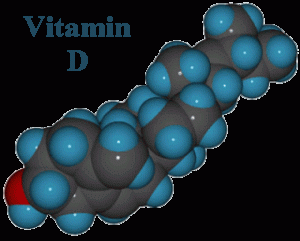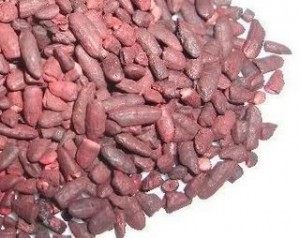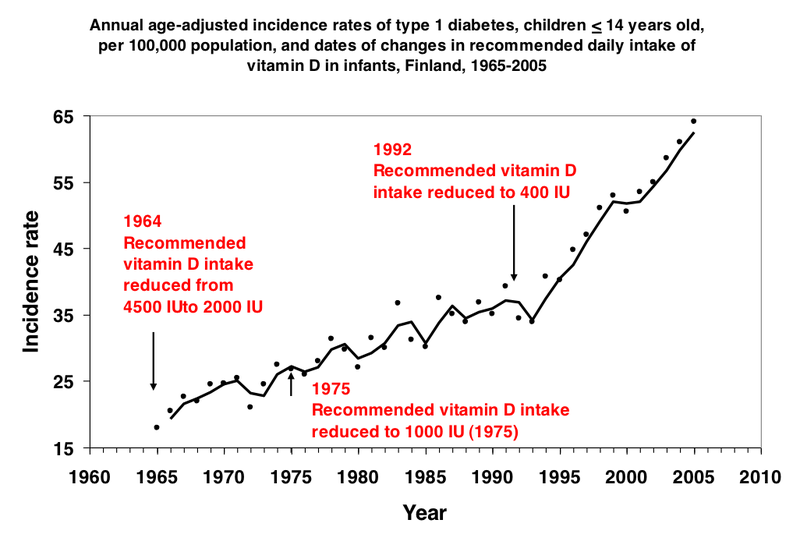
The symptoms of low vitamin D levels are subtle and difficult to distinguish, given that receptors are found in most organ systems in the body and affect genetic transcription in cells. For chronic pain the Mayo clinic suggests that Vitamin D deficiency is the first thing that should be considered. Vitamin D deficiency contributes to depression, osteoporosis, osteopenia, osteomalacia, rickets, periodontal disease, seasonal affective disorder, increased susceptibility to colds and flu, colon cancer, lung cancer, ovarian cancer, malignant melanoma, recurrence of all cancers, cardiomyopathy, cardiovascular disease, fibromyalgia, hypertension, asthma, psoriasis, MS, type 1 diabetes and it probably plays a role in type two diabetes as well. At least 78% of Americans suffer from D hypovitaminosis.
People vary widely in their absorption and use of Vitamin D which is why there is no RDA. It is more important to know how much is circulating in your blood. Why? If you are light skinned, live south of Atlanta and spend time out of doors during midday without sunscreen, you will need less supplementation than if you are dark skinned in the same situation. People with dark skin need three times the sun exposure as people with light skin to get the same benefit. If you are elderly you do not absorb or convert the vitamin as well and should take care to consume the vitamin with fat, magnesium and Vitamin K2. If you have celiac, IBS, Crohn’s or leaky gut, your absorption may be impaired. If you lack a gallbladder or have impaired fat absorption you will absorb less orally supplemented Vitamin D and may need a dry form. If you are overweight you need more because you will sequester Vitamin D in your fat, leaving less circulating in your blood. If you have cancer, diabetes or autoimmune disease, you use your Vitamin D stores faster and need to supplement more. So the best way to see if you have enough Vitamin D is to get the right blood test.
If your doctor isn’t up on the latest research, he may not be aware of which Vitamin D blood test to order. There are two common tests, only one of which is useful. The test you want is a 25 Hydroxy D test, also called 25 (OH)D. This measures the active form circulating in your blood. There is also a 125 Dihydroxy D test, also called a or 1,25(OH)(2)D. Studies show that the Vitamin D, 1,25 Dihydroxy level does not significantly change until the normal Vitamin D level, or 25(OH)D, drops to severely low levels. If you get the wrong test, it will look like your levels are normal until you are severely deficient.
Then there are two ways to express the results of the test. In the US, results are expressed as nanograms/mililiter. In other countries the results are expressed in nanomoles/liter. 1 ng/ml = 2.5 nmol/L 25 hydroxy D lab ranges of 20-56 ng/ml are the equivalent of 50-140 nmol/L.
When you get your lab values back, they tend to have reference ranges labeled “high,” “medium,” and “low.” Ignore those and ask for the number. These are average ranges of people who are apparently in good health and get blood tests. If you have a population where most people are deficient, the average reference ranges are too low. Based upon the newest research, you want levels that are at least 50ng/ml or 140 nmol/L.
According to vitamin D researcher Carole Baggerley, research shows that if we could get Americans to increase their Vitamin D3 levels to 50-80 ng/ml, we could virtually eliminate Type 1 diabetes, reduce breast and co-rectal cancer deaths by 75%, reduce psoriasis by 65%, significantly reduce MS, heart attacks, lymphoma, fibromyalgia and pain and a host of other diseases. This is based on research that did not even look at some of the higher levels indicated by newer research. As you can see in the chart below, only rickets is prevented by the relatively low amounts found in multivitamins. (You can click on the picture to enlarge the chart.)
![disease_incidence_prev_chart_101608[1] vitamin D Deficiency Diseases by Blood Level](https://naturalwellnessbykaren.com/wp-content/uploads/2023/06/disease_incidence_prev_chart_10160811-1024x791-5.jpg)
Across the top are increasing blood levels of 25 Hydroxy D. Down the rows are diseases that were shown to be affected by Vitamin D. The vertical black line is 25ng/ml, which is the level at which most diseases show some improvement. Most Americans have levels below 25, far below those needed for cancer and autoimmune disease prevention on the right side of the line. This will not protect you.
Various researchers have suggested different levels, although they seem to be climbing over time. Most just look at deficiency without suggesting optimal levels. John Cannel of the Vitamin D Council suggests a 25 Hydroxy D level of 50-80 ng/ml. Bruce Hollis defines deficiency under 32 ng/ml although he has suggested higher levels in recent speeches. So does Ferrari Bishoff. Dr. Mercola who is not a scientific researcher, suggests 50-65 ng/ml. The lab reference range that some of my patients are bringing in is between 50-100ng/ml. No credible studies show danger with levels under 200ng/ml and toxicity is often much higher.
It should be noted that there is an innate conservatism about changing reference levels too fast from what most everyone realizes were grossly inadequate levels from the past. But too many people are suffering.
My recommendation, based on the 2007 chart and newer research is that you keep your blood levels of 25 Hydroxy D between 50 and 100 ng/ml ( 125-250 nM/L.)
The amount you would get from a day in the sun, a physiological dose is approximately 25,000 iu. Because there is so much difference in absorption and use of stores, oral doses for adults can vary from 5,000 iu to 50,000 iu. You probably need levels over 10,000 iu (under half of a physiological sun dose) to budge deficiency levels, but can taper off after your stores are built up. I personally found that 10,000 iu daily doses of Vitamin D3 in an oil form did not raise my levels above the mid 30s so take 50,000 iu in the winter, at least until my goal of 60ng/ml can be reached. Maintenance doses can be considerably lower so long as the person does not have a condition that increases use or impairs absorption into the blood stream. But that is why we test periodically.
Although there is a theoretical possibility of toxicity from a fat soluble vitamin, this is virtually never seen with Vitamin D in people without specific diseases. You cannot overdose on Vitamin D from the sun because your body will break down the excess. Aside from people who suffer from hyperparathyroidism, sarcoidosis, lupus or abnormal calcification, problems from too much Vitamin D are not found under levels of 200ng/ml. (A single study which is widely believed implausible because it is out of range of other studies showed kidney stones at 150ng/ml, but most researchers disregard it.) And in one case where someone took a million iu per day because he had undiluted powder, a month of sunblock, a diuretic and ceasing the supplementation took him out of toxicity without lasting problems. Researchers believe that Vitamin D3 (cholecalciferol) may be less likely to cause problems than D2 (ergocalciferol) in large doses.
- Low vitamin D linked to the metabolic syndrome in elderly people (eurekalert.org)
- How to Make the Most (Vitamin D) from the Summer Sun (acupuncturebrooklyn.com)
- Vitamin D Regulates the Immune System (acupuncturebrooklyn.com)
- (Nursing Mothers, Infants and Vitamin D (acupuncturebrooklyn.com)
- How to Get Vitamin D from the Sun (acupuncturebrooklyn.com)
- And More On Vitamin D (acupuncturebrooklyn.com)
- Vitamin D Prevents Cancer, Type 1 Diabetes, MS, Heart Attack and Pain (acupuncturebrooklyn.com)
- Vitamin D (Calcitrol) (vivo.colostate.edu)
- What’s A Normal Vitamin D Level? (easy-immune-health.com)
- Also see the videos of the 2007 UCSD Conference on Vitamin D on YouTube or the GrassrootsHealth.net site
- Vitamin D Council
,






